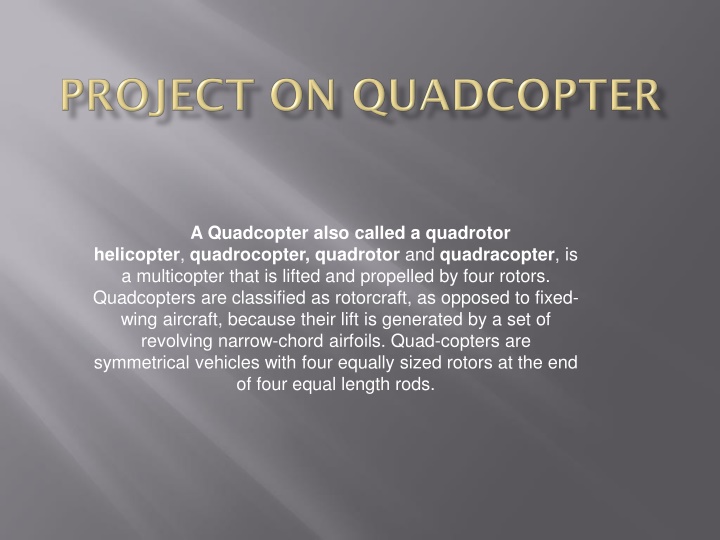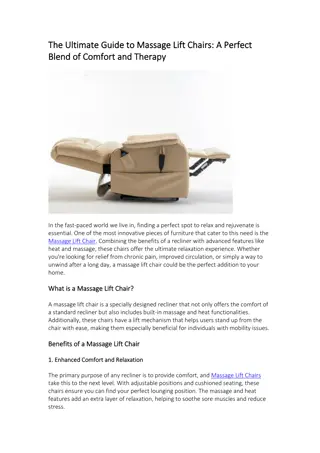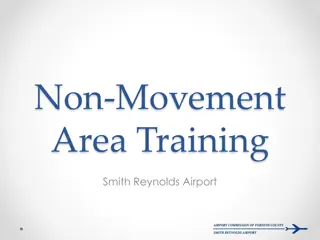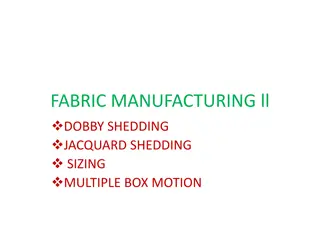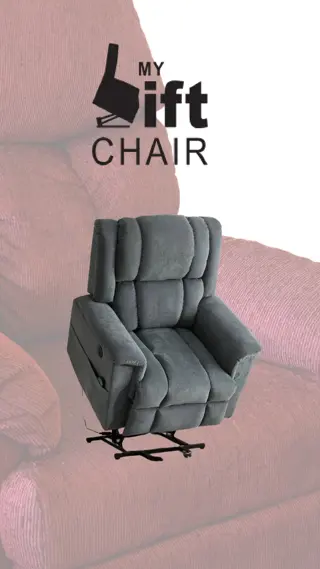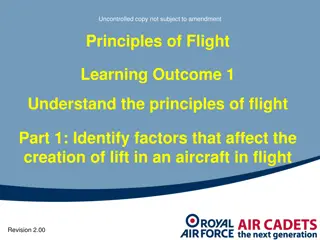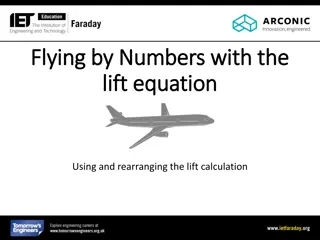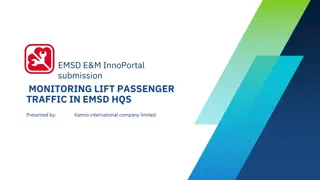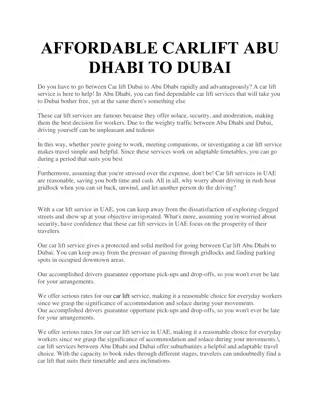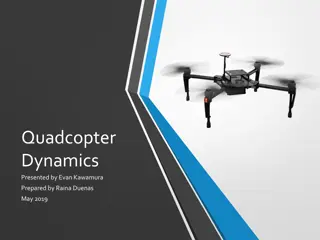Overview of Quadcopters: Lift, Movement, and Components
A quadcopter is a versatile multicopter with four rotors, enabling vertical take-off, hovering, and slow flying capabilities. This rotorcraft excels in surveillance and search & rescue operations in cluttered environments but faces stability challenges in external disturbances. Components like motors, ESCs, flight controllers, and propellers contribute to its structure and flight control. Understanding functions like yaw, pitch, and roll aids in piloting this symmetrical vehicle efficiently. Explore the advantages and disadvantages of quadcopters along with details on key components like brushless motors.
Download Presentation

Please find below an Image/Link to download the presentation.
The content on the website is provided AS IS for your information and personal use only. It may not be sold, licensed, or shared on other websites without obtaining consent from the author.If you encounter any issues during the download, it is possible that the publisher has removed the file from their server.
You are allowed to download the files provided on this website for personal or commercial use, subject to the condition that they are used lawfully. All files are the property of their respective owners.
The content on the website is provided AS IS for your information and personal use only. It may not be sold, licensed, or shared on other websites without obtaining consent from the author.
E N D
Presentation Transcript
A Quadcopter also called a quadrotor helicopter, quadrocopter, quadrotor and quadracopter, is a multicopter that is lifted and propelled by four rotors. Quadcopters are classified as rotorcraft, as opposed to fixed- wing aircraft, because their lift is generated by a set of revolving narrow-chord airfoils. Quad-copters are symmetrical vehicles with four equally sized rotors at the end of four equal length rods.
ADVANTAGES DISADVANTAGES More lift VTOL Potential to Hover Surveillance Search & Rescue in hazardous cluttered environment Slow flying capability Less stable due to external disturbances. Less flight duration If any motor fails then it becomes very difficult to control
Rudder(Yaw) function:- Left rudder: M1 & M3 decreases M2 & M4 increases Right rudder: M1 &M3 increases M2 & M4 decreases
Elevator (Pitch)function:- Up Elevator: M1 increases & M3 decreases Down elevator: M1decreases & M3 increases Aileron(Roll) function:- Left Aileron: M2 increases & M4 decreases Right Aileron M2 decreases & M4 increases
Frame or Structure Motors-4 ESCs-4 Flight controller or control board Propellers(2cw & 2ccw) Camera Transmitter & Receiver(2.4GHz)
Material:-Aluminium Central plate:-10 * 10cm Rods(4):-20cm each Width:-45cm Height:-depends
D2830-11 1000kv Brushless Motor Rpm/V: 1000kv Shaft: 3.17mm Voltage: 2S~4S (7.4v to 14.8v) Weight: 52g Watts: 210w Max Current: 21A ESC: 30A Suggested Prop: 8x4 (4S) ~ 10x7 (2S) Mounting Hole Bolt Circle: 16mm or 19mm
Size: 50.5mm x 50.5mm x 12mm Weight: 21 gram (Inc Piezo buzzer) IC: Atmega324 PA Gyro: InvenSense Inc. Accelerometer: Anologue Devices Inc. Auto-level: Yes Input Voltage: 4.8-6.0V AVR interface: standard 6 pin. Signal from Receiver: 1520us (5 channels) Signal to ESC: 1520us Hobbyking KK2.0 Multi- rotor LCD Flight Control Board
Cont Current: 30A Burst Current: 40A BEC Mode: Linear BEC : 5v / 2A Lipo Cells: 2-4 NiMH : 5-12 Weight: 25g Size: 45x24x11mm
ZIPPY Flightmax 2200mAh 3S1P 25C Capacity: 2200mAh Voltage: 3S1P / 3 Cell / 11.1v Discharge: 25C Constant / 35C Burst Weight: 173g (including wire, plug & shrink wrap) Dimensions: 104x36x25mm Balance Plug: JST-XH Discharge plug: XT60
ZIPPY Compact 5000mAh 3S 25C Lipo Pack Capacity: 5000mAh Voltage: 3S1P / 3 Cell / 11.1V Discharge: 25C Constant / 35C Burst Weight: 354g (including wire, plug & case) Dimensions: 162x21x46m m Balance Plug: JST-XH Discharge Plug: 5.5mm Bullet
